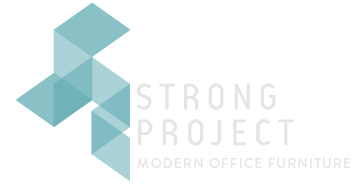A multi-modal design goes above and beyond the traditional office space. Workers want more than just a desk and a chair. People want a reason to be there. Multi-modal spaces provide workers with all of the resources they need to excel in their positions. An efficient office space layout offers areas for people to work in solitude, collaborative spaces, and community spaces that offer a reprieve from the day-to-day. A multi-modal office layout design creates not only a workspace for employees but also an experience.
Elements of a Multi-Modal Design
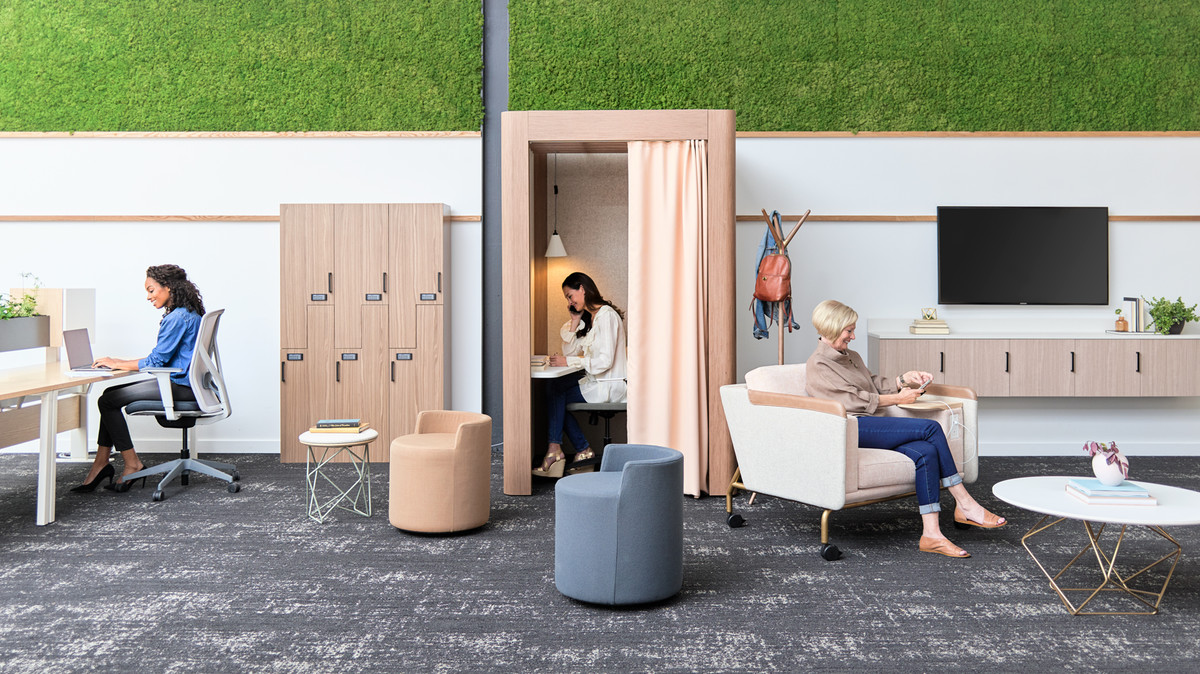 Multi-modal office layouts allow workers to connect with each other. The multi-modal office design encourages communication without forcing it on employees. The once plain and bland breakroom has been transformed into a recreation area. The sterile walls are now colorful and decorated with art or achievements, and the company culture is communicated throughout the office
Multi-modal office layouts allow workers to connect with each other. The multi-modal office design encourages communication without forcing it on employees. The once plain and bland breakroom has been transformed into a recreation area. The sterile walls are now colorful and decorated with art or achievements, and the company culture is communicated throughout the office
The strategic and efficient office space layouts give employees the ability to move freely about the office. The different types of spaces provide workers with many options, not only spaces to work in but spaces to spend downtime in. The type of work influences the types of spaces needed, but the goal of a multi-modal design is the same. When looking at a multi-modal office layout design it’s reflective of the employee’s work.
An efficient office space design creates meaningful spaces that support genuine social interactions and community.
Employees use intense focus areas to work undisturbed, while formal and informal meeting spaces offer options for collaboration, allowing them to find the appropriate area. Even breakrooms can encourage social interaction. There is no wasted space in an efficient office space layout.
A multi-modal office design has elements that reflect the company’s mission, culture, and social responsibility. An environmentally conscious company might use recycled goods or upcycled furniture. A company that has made diversity a part of its vision might have multicultural themes throughout the office. The main elements of a multi-modal office design are not only reflective of the company but also reflective of the workers who use that space.
Multi-Modal Design and Communication
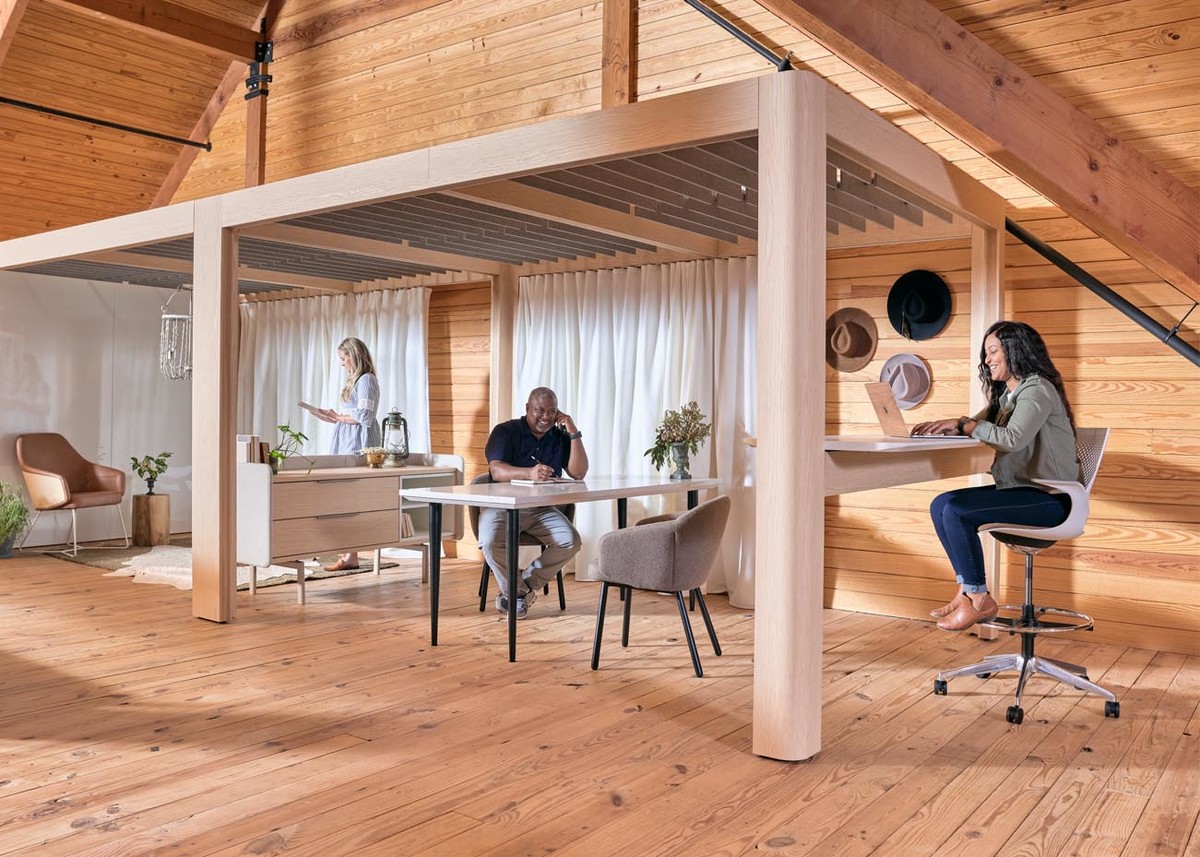 Work can become dull, especially if the work experience isn’t ideal. Private and sectioned-off workspaces don’t give employees the opportunity they need to connect and interact with coworkers. The multi-modal design allows employees to communicate with their colleagues without forcing interaction. An efficient office space design creates meaningful spaces that support genuine social interactions and community.
Work can become dull, especially if the work experience isn’t ideal. Private and sectioned-off workspaces don’t give employees the opportunity they need to connect and interact with coworkers. The multi-modal design allows employees to communicate with their colleagues without forcing interaction. An efficient office space design creates meaningful spaces that support genuine social interactions and community.
Multi-modal designs create perfect areas for employees to work together. Comfortable lounge seating, ergonomic office furniture, and intriguing visuals are replacing the traditional bland and sterile board rooms. These changes make spaces more enjoyable. One of the main characteristics of multi-modal spaces is spaces dedicated to specific types of work. Depending on the nature of the work there might be more of a need for a formal meeting area rather than a casual setting. Encouraging communication starts with giving workers the necessary environment to excel.
Multi-Modal Office Designs and Diversity
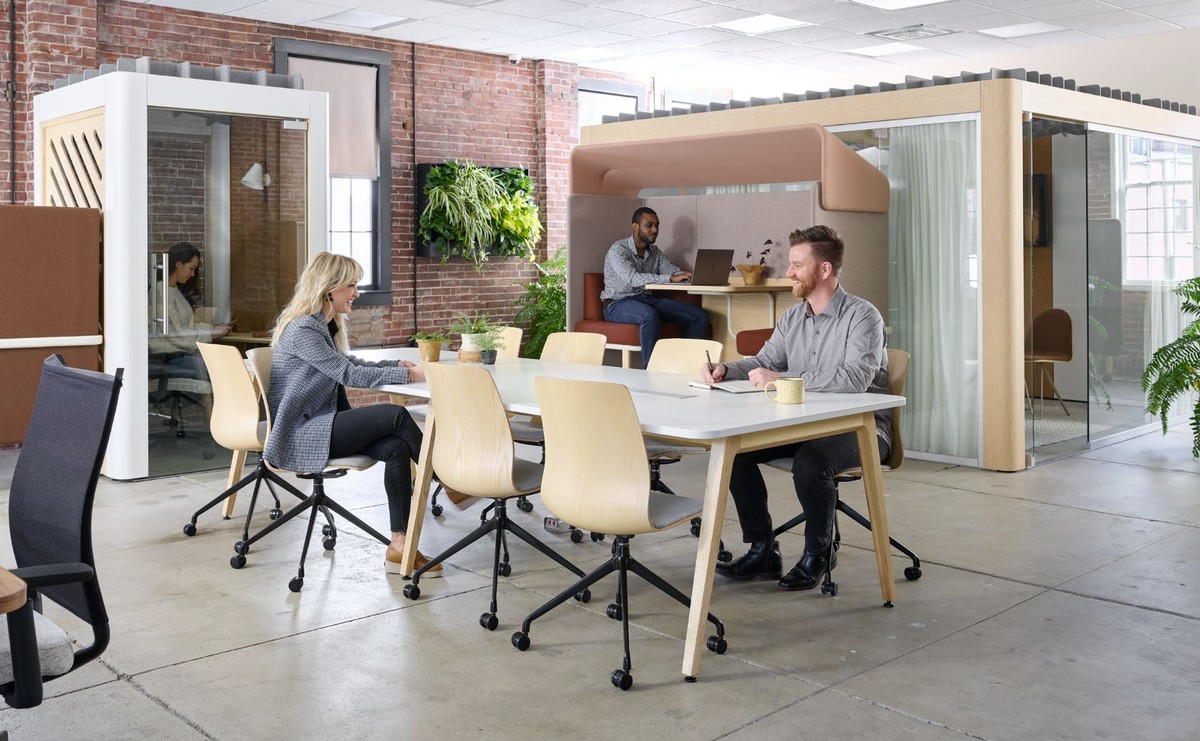 Employees want a space that is reflective of them. A Psicosmart article highlighted the increasing diversity in the workplace and how it can be beneficial to the workplace and operations. This means more and more people of different races, genders, cultures, and backgrounds are increasing their share in the workforce. A diverse group of workers have diverse needs. Multi-modal offices can incorporate the workers and their identities. Supporting employees and their different working styles creates an environment that can help them not only enjoy but succeed.
Employees want a space that is reflective of them. A Psicosmart article highlighted the increasing diversity in the workplace and how it can be beneficial to the workplace and operations. This means more and more people of different races, genders, cultures, and backgrounds are increasing their share in the workforce. A diverse group of workers have diverse needs. Multi-modal offices can incorporate the workers and their identities. Supporting employees and their different working styles creates an environment that can help them not only enjoy but succeed.
How to Implement a Multi-Modal Design
Designing a multi-modal office layout presents challenges. At times it can be difficult to anticipate your employees’ needs. You might know what employees need to do their job successfully but figuring out how to give it to them can seem difficult. Larger firms have the space and funds to create sprawling campuses with every type of space imaginable. Smaller organizations don’t have that luxury. Limited space requires creativity when designing the layout.
Consider whether your company can support a hybrid model when designing a multi-modal office layout. Allowing your employees to work remotely can free up large amounts of space. Multi-modal designs create meaningful areas now that the need for desks and personal workspaces is reduced.
Encouraging communication starts with giving workers the necessary environment to excel.
Understanding employees’ needs doesn’t only help you create an environment employees want to be in. You’re able to provide employees with what they need to do their jobs. The workplace is increasingly using advanced technology. Multi-modal offices can benefit from technology integration. Automated workspaces, office space scheduling software, and rooms designed to conduct video conferences can help employees do their jobs.
When designing a multi-modal space, the style, brand, and look can be just as important as the functionality. An organization has an identity and that identity should be displayed throughout the office. Employees want to take pride in the organization they work for so the theme must be carried throughout the workplace. A multi-modal office design doesn’t need to have loud pops of color or distracting artwork. Finally, the brand image should be reflected in the workplace.
Hybrid Offices and the Future
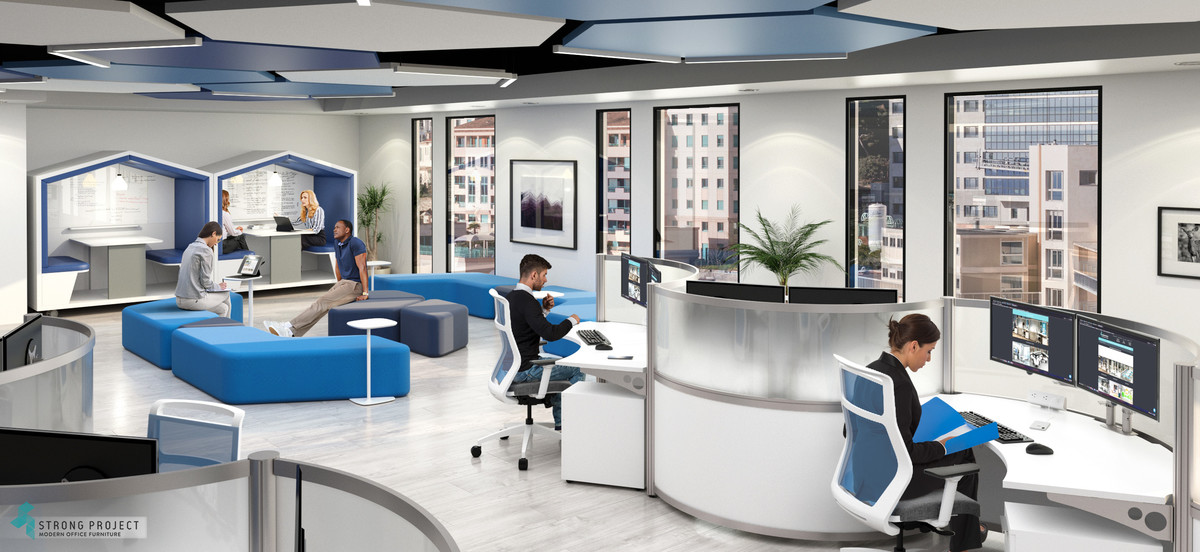 The multi-modal office is becoming more common. Employees come and go so the office should appeal to everybody. Giving employees the ability to rearrange their workspace, gathering areas, and collaborative space empowers them to complete their work the way that best suits them. Within the last few years, the hybrid model is becoming more popular and the social component of the workplace is becoming less prevalent. Working at home removes the need to socialize.
The multi-modal office is becoming more common. Employees come and go so the office should appeal to everybody. Giving employees the ability to rearrange their workspace, gathering areas, and collaborative space empowers them to complete their work the way that best suits them. Within the last few years, the hybrid model is becoming more popular and the social component of the workplace is becoming less prevalent. Working at home removes the need to socialize.
When employees are in the workplace the space should encourage socializing and those encounters. Harvard Business Review talks about how important it is that the office remains a vehicle for social interactions. With the evolution of mixed-use space, new business models, and diversity in the workplace. Multi-modal offices are becoming more necessary to meet employees’ needs and provide them with the necessary tools to do their jobs. In short multi-modal office designs are the future of the workplace.
Shop our modern office workstation cubicles for today’s workplace.
Want to learn more about the hybrid office? Check out our comprehensive guide!
